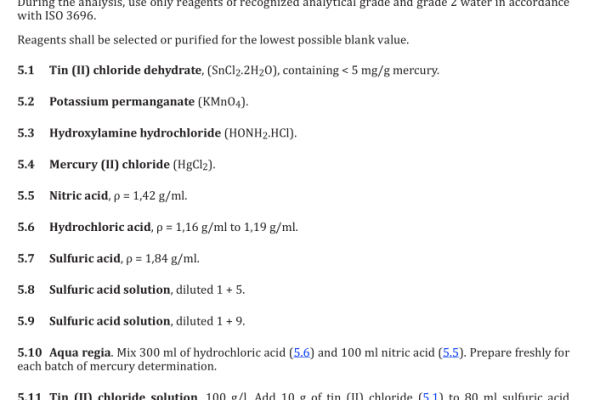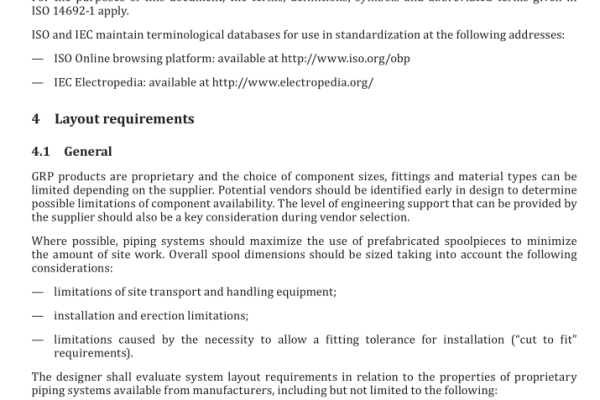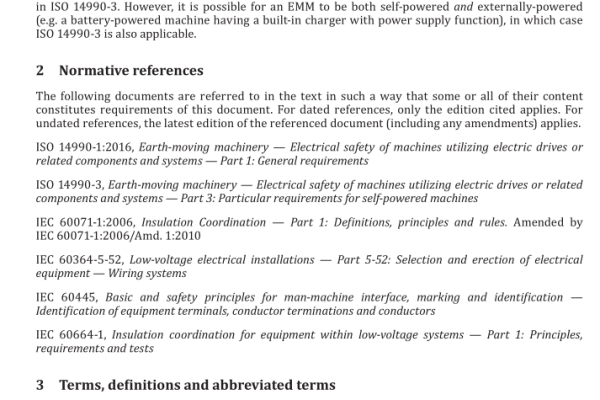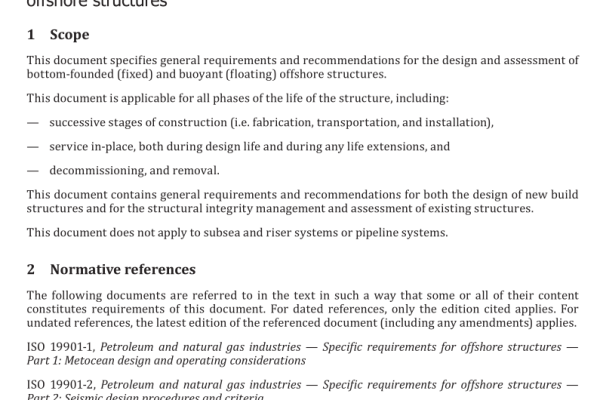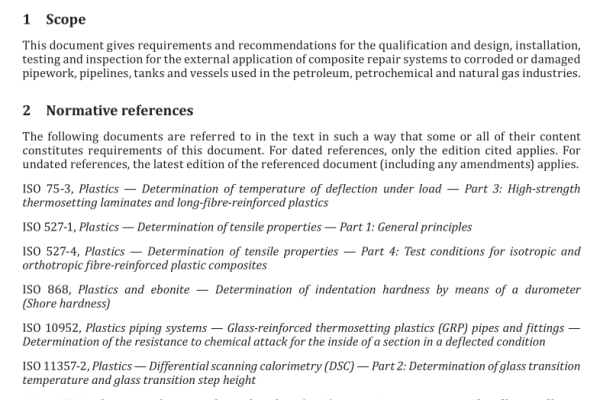ISO 3146:2022 pdf download Plastics — Determination of melting behaviour (melting temperature or melting range) of semi-crystalline polymers by capillary tube and polarizing-microscope methods
ScopeThis document specifies two methods for evaluating the melting behaviour of semi-crystallinepolymers.
a) Method A: Capillary tube
This method is based on the changes in shape of the polymer. lt is applicable to all semi-crystallinepolymers and their compounds.
NOTE 1 Method A can also be useful for the evaluation of the softening of non-crystalline solidsb) Method B: Polarizing microscope
This method is based on changes in the optical properties of the polymer lt is applicable to polymerscontaining a birefringent crystalline phase. lt might not be suitable for plastics compounds containingpigments and/or other additives which can interfere with the birefringence of the polymeric crystallinezone.
NOTE 2Another method applicable to semi-crystalline polymers is described in ISO 11357-3
2 Normative references
The following documents are referred to in the text in such a way that some or all of their contentconstitutes requirements of this document. For dated references, only the edition cited applies. Folundated references, the latest edition ofthe referenced document (including any amendments) applies.
ISO 291, Plastics — Standard atmospheres for conditioning and testingISO 472, Plastics – Vocabulary
3Terms and definitions
For the purposes of this document, the terms and definitions given in ISO 472 and the following apply.
ISO and IEC maintain terminological databases for use in standardization at the following addresses.
ISO Online browsing platform: available at https://wwwiso.org/obp
IEC Electropedia: available at https://wwwelectropediaorg/
3.1
melting range
temperature range over which crystalline orsemi-crystalline polymers lose their crystallinecharacteristics or particulate shape when heated
Note 1 to entry: The “melting temperatures” determined by methods A and B are specified in 4.1 and 5.1
4.3.2 Characteristics
Powder of particle size up to 100 µm or cut pieces of film of thickness 10 µm to 20 µm should preferably be used.
Comparison tests shall be carried out on test samples of the same or similar particle size, or of similar thickness in the case of layers or films.
4.3.3 Conditioning
If not otherwise specified or agreed between the interested parties, the test sample shall be conditioned at (23 ± 2) °C and a relative humidity of (50 ± 5) % for 3 h in accordance with ISO 291 prior to the measurement.
4.4 Procedure
4.4.1 Calibration
Periodically calibrate the thermometer with reagent grade or certified chemicals over the temperature range used for the test.
Chemicals recommended for calibration purposes are listed in Table 1.
ISO 3146:2022 pdf download

